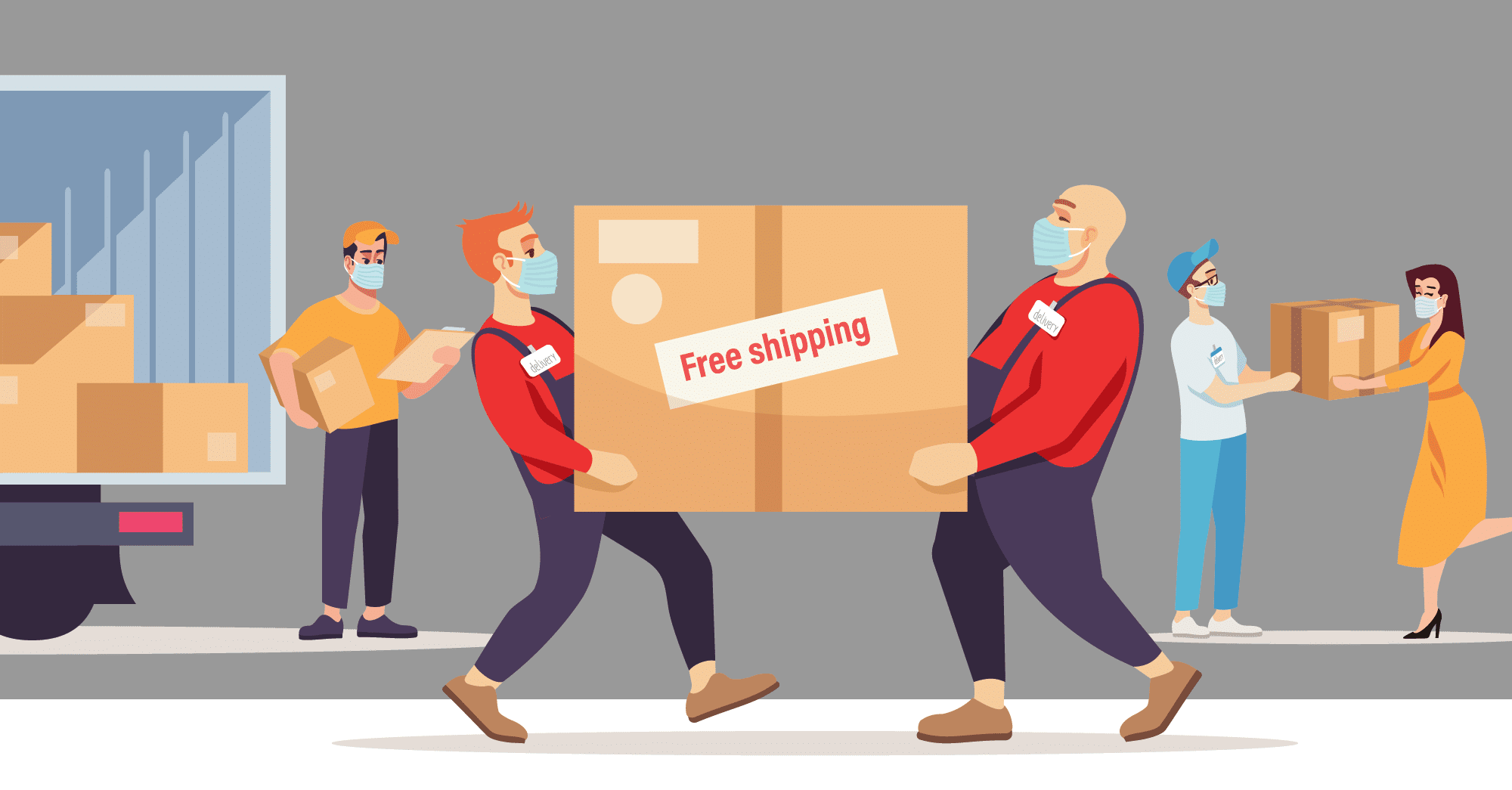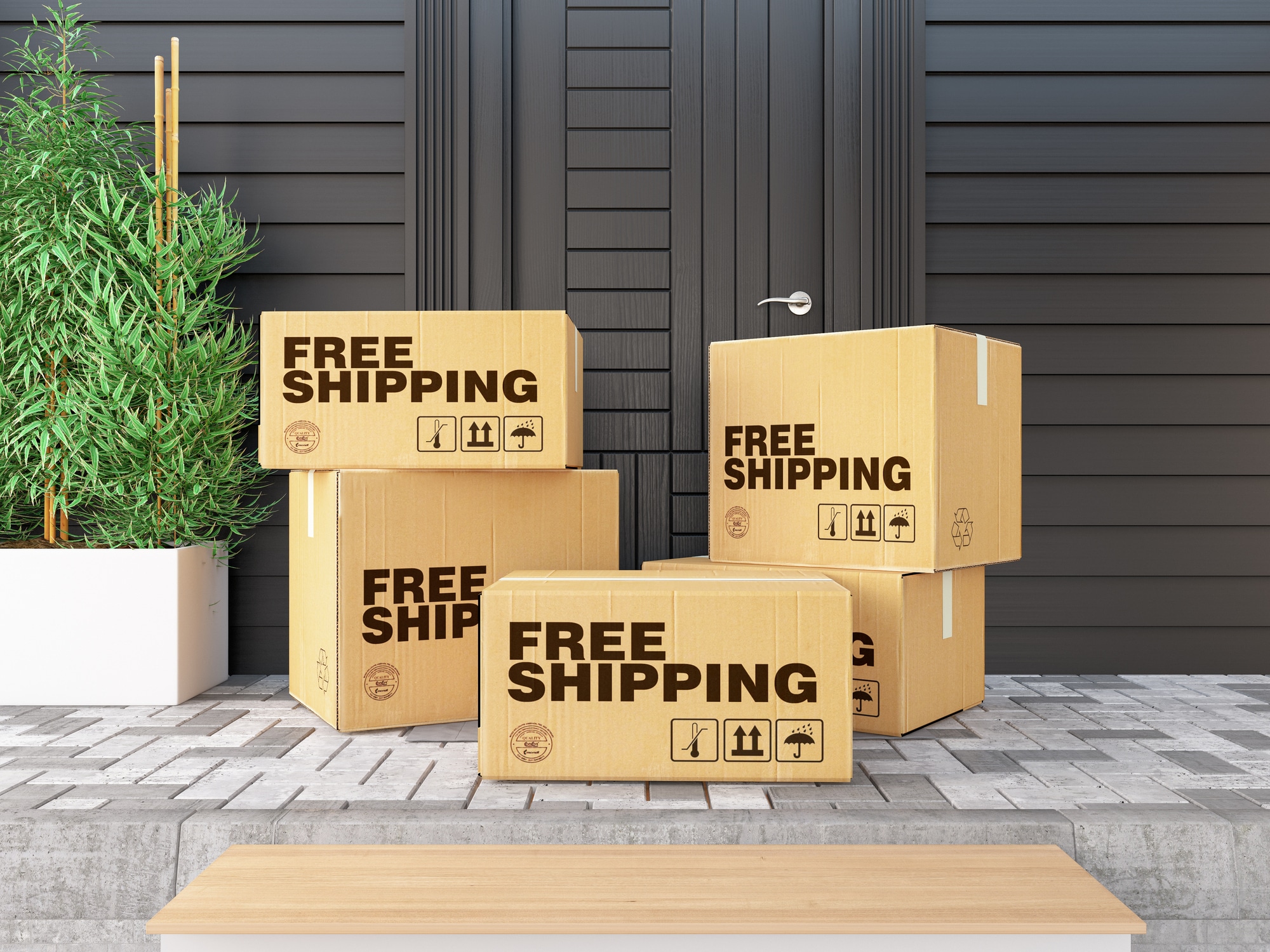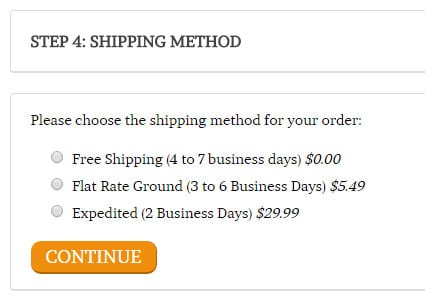How to Make Money as a Seller From Free Shipping

Let's face it, as ecommerce sellers, we hate free shipping.
Okay, hate might be a strong word. Let's use the phrase: Grudgingly bear with it because it improves conversions even though 80% of buyers would actually save money by not subsidizing a guy on a farm in South Dakota instead.
In a fair world, everyone pays exactly what they should for shipping, but consumers are an interesting bunch. Study after study shows that customers want free shipping, even though as sellers, we simply label it “free” while tacking on shipping costs. Most merchants end up subsidizing shipping in some way or another, to stay competitive with the likes of Amazon, but have come to terms that it's the price of doing business.
But what if I were to tell you, that other than just increasing conversions, there was a way to make cash in hand money by offering free shipping? Too good to be true? That's what we thought, before we stumbled onto this by pure accident.
In our first holiday season with CuttingBoard.com, Mike and I were planning our strategy on marketing and operations more or less blind. With no previous year sales data and only a few months of regular sales data, the only thing we had figured out by that point was that customers only want free shipping. We had played with changing the cart requirements from $25, to $50, to $100, then back down to $75 in order to qualify, and we found that there was a significant percentage of people that simply refuse to pay for shipping. It was essentially to set the bar that didn't turn away too many customers, while also not burning a hole in our pocket by over-subsidizing our shipping costs.
In fact, a study that Visual Website Optimizer did in 2014 showed that 28% of customers abandoned checkout because of unexpected shipping costs. They also found out that 23% of people left because they had to create a new user account, which is one of the reasons we modified the default BigCommerce checkout page (which automatically asks customers to register an account) and put our own instead, which that lead to a 30% increase in conversions.
Related Reading: Amazon Conversion Rates
In addition to setting our free shipping tier, Mike and I also had a lengthy debate on putting in 2-day shipping. Cutting boards are heavy items and we were shipping only from the West coast at the time, so an average 2-Day Air package from UPS was going to run $70-$80 to the East coast. I was of the insistent that some customers would not blink at that price, while Mike was adamant that no one would pay that much for shipping.
As in most of our debates, there was the usual polite skirmish of words, followed up by veiled questioning of the others' competence, rounded out with veiled insults of each others' manhood, until finally an agreement is made to let the data decide. Professional workflow at its best.
After only a month, we found customers were not only willing, but happily taking us up on our offer of 2-Day shipping. This worked out well for us, because whereas our free shipping is essentially subsidized by cutting into our margins, our expedited shipping is calculated and thus not subsidized – leaving us with our margins fully intact.
Related Podcast: E330: Focusing on Logistics to Increase Profitability
So, the first lesson in how to make money from a free shipping offer is to also add premium or expedited delivery services as an option. If even a small percentage of your customers simply want it faster (gifts and birthdays often make people not care about price), then you should offer this service not only to improve your bottom line, but because your customers want it!
Plus, it's no secret that customers have been wanting their deliveries faster for a very long time. An Accenture retailing study from 2014 showed that 41% of shoppers want same day delivery and 75% want to specify a time and day for their order to arrive. With Amazon Prime customers now penetrating over 20% of the entire US population and offering 2-Day and Same-Day shipping, it's very apparent that customers are impatient for their goods as ever.
Using Reverse Psychology on the Standard Free Shipping Offer
On BigCommerce, the platform supports automated free shipping rules, which can add a checkout option for free shipping if the customer hits a certain threshold. This means any of our customers that were offered free shipping would show three results for: Free Shipping, Ground Shipping and Expedited Shipping.
To make for a better customer experience, we changed the Expedited Shipping to say “Expedited Shipping (2 Business Days)” so that customers would know exactly when to expect their shipment. As a result of creating that expectation however, we then changed Ground Shipping to say “Ground Shipping (3 to 6 Business Days)” to reflect that. Unfortunately, BigCommerce had no way of modifying the Free Shipping option to show an expected time table, but we figured customers wouldn't care that much, since it's free after all. So we had two shipping options with time frames and one without.
After we implemented our expected transit time options though, a funny thing began to happen: a small but not insignificant portion of our customers that qualified for Free Shipping would still pay for Ground Shipping.
Huh?
We thought this had to some kind of mistake with our shipping implementation at first and we tried to recreate some scenario that would result in a customer not being presented with free shipping after hitting the checkout threshold, but to no avail. If I remember, we may have actually did an over-the-shoulder checkout via MouseFlow to actually see what a customer was doing and saw that they purposefully paid for Ground Shipping instead of selecting Free Shipping.
It finally dawned on us that we stumbled across our own version of the Decoy Effect which I first learned about in a Ted talk by Dan Ariely. It's a wonderful marketing insight and a must-view if you want to get into the head of your customers:
So what happened when we kept Free Shipping from having a time table, was that some of our customers made an intuitive guess that because our Free Shipping option didn't have an estimated transit time, they assumed that it would be slow. In fact, they were so concerned about it being slow that they opted to pay our flat shipping charge of $5.49 instead of getting free shipping. The reality however, is that our Free Shipping and Ground Shipping options are almost always shipped using the exact same shipping carrier!
We were able to boost our average gross margins by 2% just by utilizing the decoy effect.
We were lucky because it was the holidays and BigCommerce had a lack of ability to modify the Free Shipping information in order to randomly stumble across this little gem. It turned out that around 15-20% of our customers during that time ended up opting to pay for shipping, even though they qualified for fee shipping. This meant we were able to boost our average gross margins by 2% just by utilizing the decoy effect.
In the world of economics, there is a concept called price discrimination. The general idea is that in a perfect world (for the supply side), you would be able to sell a product or service to the buyer at the maximum price they are willing to pay. As it relates to ecommerce, this means only discounting for those who are bargain hunters, selling at normal price for regular shoppers and charging a premium for customers who don't care.
In reality, price discrimination may actually be illegal according to the FTC and Robinson-Patman Act, though it hasn't seemed to stop major online stores like Staples.com and HomeDepot.com as reported by the WSJ. You can see how it appeals to merchants however, because it offers the potential to maximize profits if you know enough about your customers.
Before I go further, I should make it clear that I do not think this technique is in any way illegal, but it does put employ price discrimination theory. Customers that still want free shipping, can get free shipping. Customers that optionally pay more for shipping, will still get the service that they are paying for.
That said, I'm not one to treat my customers like suckers, so what I've done is priority routed all “Free Shipping” customers that did pay for shipping, so that they are the first out the door even if they are past the shipping cut-off. So in effect, I truly am providing an enhanced service behind closed doors.
Most recently, to push the practice to the greatest effect, I wrote a JavaScript helper that would modify the Free Shipping option during checkout to add the transit time.
You can see, our customers are able to see an estimated transit time for their packages and also decide what works best for them. In fact, I'm still testing this method vs omitting the time frame entirely from the Free Shipping option and will let you all know how this does in the future.
As an aside, you know who are the slimiest best marketers at this game? Online florists. Why? Because if you've ever bought flowers online, the checkout process is made to make you worry. They know if you're ordering flowers online that you're most likely a man or a business expense account, so you're beholden to them when you see these options come up at check out:
- Standard Shipping: $25.00
- Add Rush: +$10.00 (if delivered within 48 hours)
- Add AM Delivery: +$10 (for delivery before 2pm)
- Add Weekend Delivery: +$20.00
- Add Hand Written Card: +$10.00
- Add Teddy Bear: +$15.00
- Add Chocolates: +$30.00
To me, they might as well add these while they're at it:
- Add Delivery Guarantee: +$10 (Or just risk your wife thinking you forgot your anniversary!)
- Add Driver Background Check: +$7 (Is your local florist a convicted felon?)
- Add Gluten Free Flower Water: +$5 (Longer lasting flowers, because evil gluten water!)
I mean, you get the idea. These are more like upsell examples, what they're doing is forcing you to doubt that your standard shipping option is good enough. Typical marketing 101 at it's best: create a need, fulfill that need. Since they know their customers, they know that if I've committed $60 for flowers plus delivery, I'll groan and add another $20 just to make sure I don't get the phantom “f— you” from my florist.
Conclusion – Give Your Customers Shipping Options to Maximize Profit
If you're offering free shipping (as you probably should), the big takeaways are that you should be offering a calculated shipping option if possible, not just as a service, but to build additional revenue. As well, while I wouldn't say to make your free shipping option look “bad” or purposely add handling time, I would encourage you to find ways to discover the price sensitivity of your customers on shipping so that you can maximize your bottom line.
Have you had any success with your shipping strategies? We would love to hear them, so please leave your comments for Grant and Mike below!






Really appreciate this article, it helped me figure out what we needed to do on our shipping and also streamline checkout process on our site. We sell Polaris RZR parts and accessories.
Glad it helped! :)
This was super informative Grant – I’m completely devouring your blog but this post has definitely made me re-think my shipping strategy. Time to see if it helps my conversions!
All men can relate to the flower story, great writing!